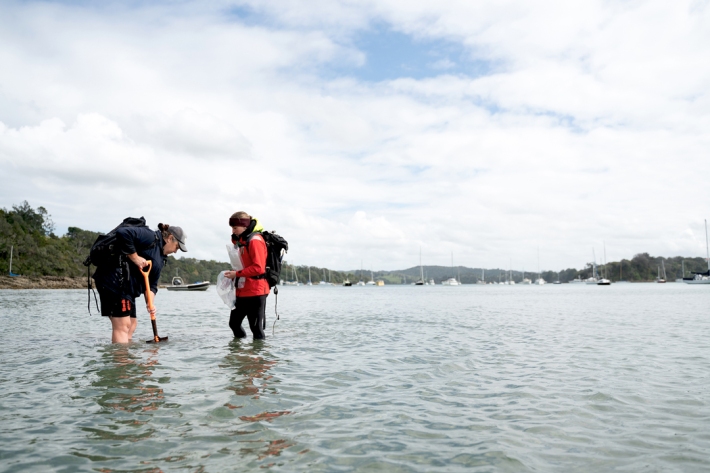19 March 2021
Freshwater Update 85 brings you the latest information from our Freshwater & Estuaries Centre. This edition shares articles about two new NIWA water quality tools, lamprey passage structure results, and features on water quantity challenges and estuaries.
In this issue

A New Zealand Water Model update: a tool for water management now and in the future.
Models are needed because it is impossible to directly observe environmental variables at all locations, all the time or in the future. Hydrological models can make reliable predictions in ungauged catchments and about future conditions.
A helping hand for lamprey at instream obstacles
At night, in the NIWA lab in Hamilton, lamprey have been climbing structures to help scientists understand how they can navigate waterways.
Measuring copper and zinc in urban waterways
New Zealand’s population is increasingly urban. As of 2018, major urban areas in Aotearoa accounted for more than half of the population. As the population grows and urban development expands and intensifies, freshwater environments in urban areas are coming under increasing pressure.
The Eutrophication Explorer Tool
Eutrophication refers to increasing levels of plant nutrients in a water body, and increasing risks that algae and aquatic plants will growth to nuisance levels and degrade water quality.Estuaries and lowland brackish habitats
NIWA scientists Dr Andrew Swales, Dr Rob Bell and Dr Drew Lohrer wrote a chapter on estuaries for the NZ Coastal Society sea-level rise special publication in late 2020 called Estuaries and lowland brackish habitats.
Staff Profile: Cindy Baker
I am a Principal Scientist of freshwater fish. I specialise in fish ecology, particularly lamprey (kanakana/piharau) and whitebait species, and the use of pheromones/semio-chemicals for population monitoring, enhancement and control.-

The future shape of water
How much is too much? Susan Pepperell looks at some of the tough decisions looming around access to freshwater and how science is helping with solutions. 
Eyes in the land
Principal Scientist Paul Champion took Kennedy Warne of New Zealand Geographic along on a monitoring survey of the precious Lake Ngatu. The dune lake is a taonga to local iwi and the freshwater biosecurity team monitor the ecological health of the local lakes in partnership with Northland Regional Council and tangata whenua.-

Keeping tabs on muddy waters
Estuaries provide a crucial link between our rivers and our seas. Sam Fraser-Baxter heads out with a NIWA research team keeping a close eye on these vulnerable transition zones.

